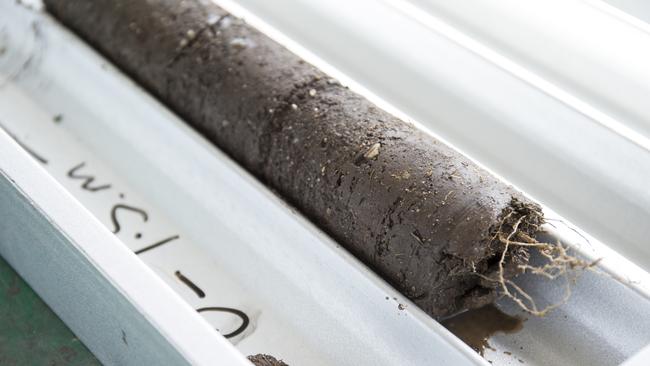EPA to test soil in Unley for TCE contamination after vapour found
THE EPA will test soil in a section of Unley for TCE contamination using 22 small bores after potentially hazardous vapour was detected in a bore on a property being redeveloped.
SA News
Don't miss out on the headlines from SA News. Followed categories will be added to My News.
- Parklands playground closed after soil contamination
- Clovelly Park soil contamination spreading
- Adelaide groundwater contamination scandal spreads
- Truckloads of contaminated soil will have to be removed
SOIL contamination tests will be done at Unley after a site audit found trichloroethylene (TCE) vapour in a bore — the same chemical that caused the precautionary evacuation of homes at Clovelly Park and demolition of 25 buildings.
The Environmental Protection Authority will drill 22 temporary small bores, about 1 metre deep and 5cm wide and covered with a plastic lid, on footpath verges to install small ‘Waterloo’ test capsules for about 10 days which register the amount of TCE vapour.
The results should be known by July and residents will be informed.
The EPA has written to residents in about 300 properties bounded by Charles Lane, Tyne Place, Mary St and Little Charles Lane advising them not to use bore water for any purpose, although home-grown fruit and vegetables are considered safe to eat provided they are not watered with contaminated bore water.

Much of the area has been redeveloped in recent years and includes townhouses — one was recently advertised for sale for $529,000, which noted it was within “strolling distance to trendy cafes and restaurants on Unley and King William Rd”.
An EPA-accredited auditor detected the vapour while checking a property application for redevelopment and reported it to the EPA, which will carry out the testing as a precaution.
The source of the contamination is not known but groundwater in the area is believed to be affected by past uses including refrigeration manufacturing, furniture manufacturing, cabinet making, boot making and a drapery.
TCE was widely used as a solvent in the past and it was accepted practice for it to be left on the ground to soak in or poured down drains.
It has the potential to accumulate in groundwater and rise as vapour, which can cause health risks if it becomes concentrated in enclosed spaces with poor ventilation at high levels for long periods.

EPA Director of Science and Assessment Peter Dolan said the area had been prioritised for testing based on the discovery of vapour.
“We are advising people not to use groundwater as a precaution,” he said.
“It is regarded as an orphan site, as we don’t know who the responsible party was — there were a variety of industrial users in the past, but they are long gone.”
The EPA will host an community information evening on May 11, ph 1800 729175.
The legacy of past industrial practices has seen the EPA testing for TCE groundwater contamination and vapour in areas including Marleston, Clovelly Park-Mitchell Park, Beverley, Woodville West and Woodville South, Edwardstown, Elizabeth (General Motors Holden), Glenelg East, Keswick, Hendon and South Plympton.



